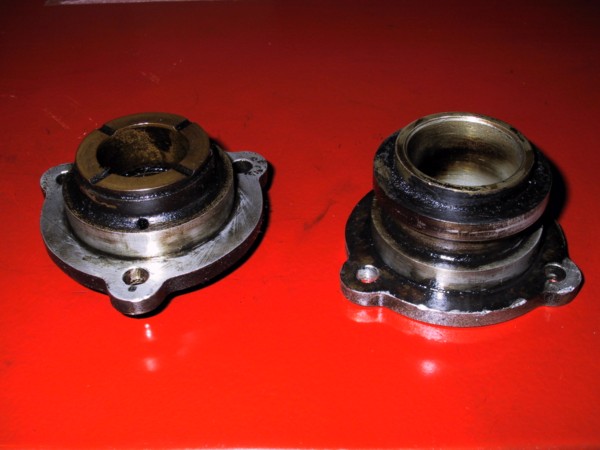
The two end plates for the camshaft.
On the left is the front item containing a bush to support the shaft - note the oil drain hole.
To the right is the rear plate that acts both as a seal and as a support for the tail of the camshaft.
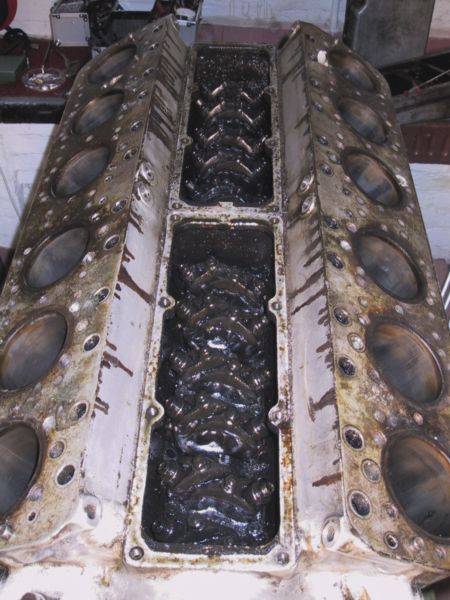
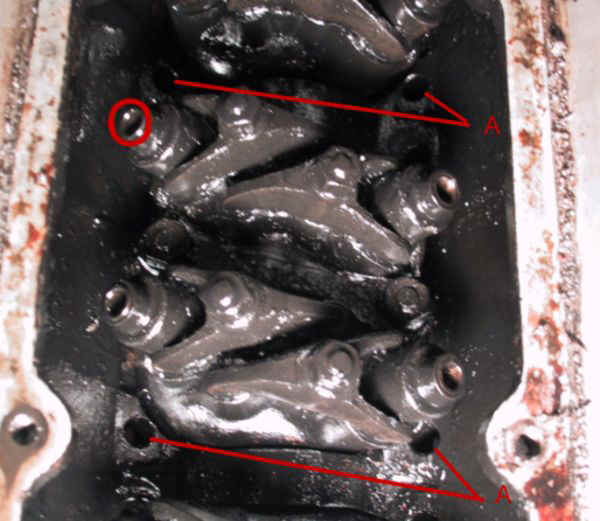
A close-up of one very dirty cam follower block in situ. There are six of these blocks, each servicing a 'V' pair of cylinders.
The four holes marked 'A' are the oil drain holes to take the lubricant back to the sump.
Outlined in the red circle is one of the follower guide cases; inside is the guide, spring and follower. Below are shots of the components.
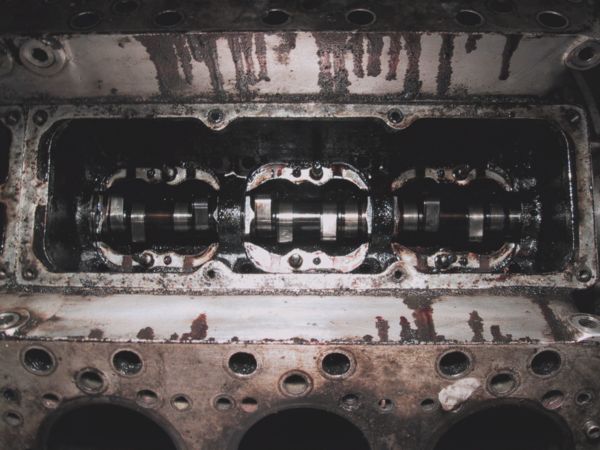
Blocks removed. This is a picture of the rear half of the camshaft.
The dribbles on the block faces are the gasket sealant that caused so much trouble when trying to remove the heads.
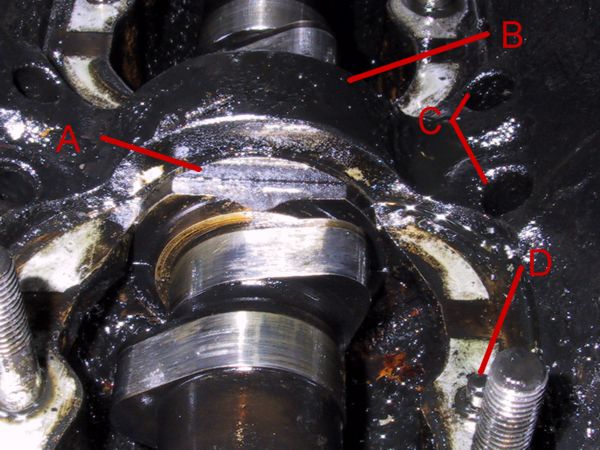
A close-up of one of the support and bushes for the camshaft.
A) The bush, in two parts, split horizontally. The flat face sits under the machined surface of the follower block.
B) The locating bridge for the bush is part of the engine casting.
C) Oil drain holes.
D) One of the two lugs inserted in the block to ensure accurate location of the follower block.
The dark patch, on the mating face just above the lug 'D', is one of the vents that allow excess oil out of the camshaft well into the chest.
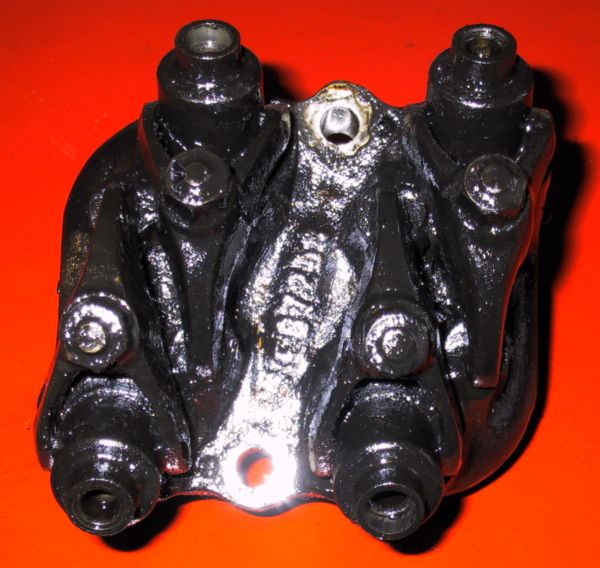
Follower block on the bench. The yokes are rigid and are used to hold the guide cases in place. The lower two cases show the follower ends - the left one being stuck at the top of its stroke by some debris.
This engine always rattled slightly when cold - probably due to dirt slowing the free return of the followers - but ran quietly after about two minutes of warming. I resisted using flushing oil but changed the engine oil every 250-500 miles.
It just demonstrates what little effect it made to the state of this neglected engine!
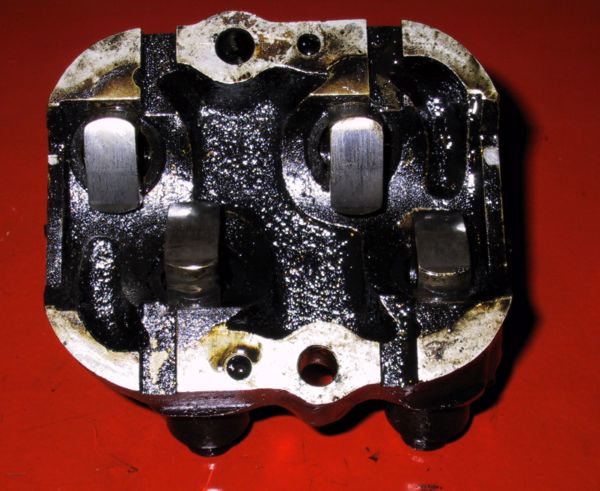
Inside the block with the cam follower faces on display. All followers and the camshaft lobes are in amazingly good condition despite the filthy condition of the non-moving parts.
Note the two sockets that mate with the lugs in the block; also the four vents.
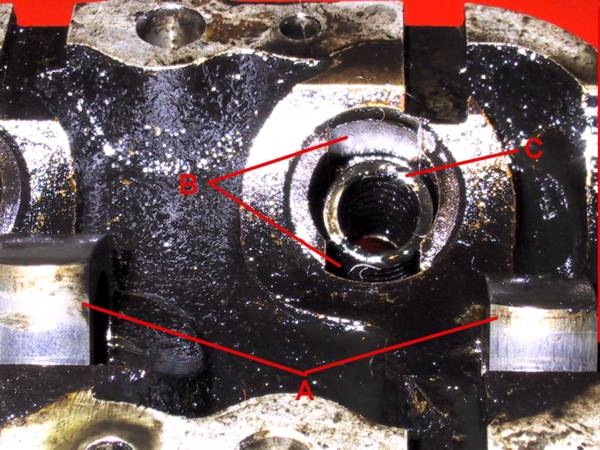
Follower block inverted and one follower removed.
A) Side view of two followers.
B) Accurately cut slots in the guide.
C) Follower return spring.
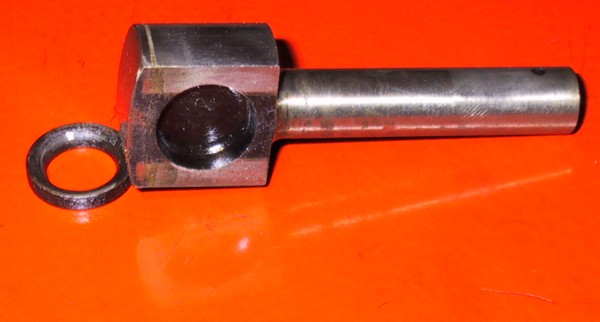
Cam follower and spring seat.
The washer is on its flat face which sits against the spring; its radiused upper surface abuts the rounded shoulder at the top of the follower shank.
The shiny horizontal marks on the side of the follower are where is moves in its guide. The line beneath the hardened rubbing surface is where the latter is attached to the main body. Note the lubrication hole at the end of the shank by the pushrod socket.